The Mike Toole Show
Yokoyama Watching Diary
by Michael Toole,
Hey gang, have you got one of those tablet things yet? You know the deal-- not exactly computers, but not simple, dumb e-readers either. They're pretty ubiquitous these days-- they got touchscreens, they light up and play music and movies and games, and about 50% of ‘em are iPads. I got my first tablet, a Dell Streak, a couple of years back, and that thing was damn useful. It handled basic stuff like email and web surfing, plus games, photo, video-- you name it. But more than anything else, that Streak was amazing at making me want an iPad. It ran Android, which was weirdly inelegant and unstable at times, a sharp counterpoint to Apple's polished iOS. It made me want an iPad way more than advertisements and peer pressure did. So I got an iPad.
The reason I'm leading with a few thoughts on having an iPad is because it's changed how I experience anime and manga in a couple of very significant ways. First of all, I'm a Shonen Jump subscriber, and if you have a device that supports it (and now that it works on Android as well as iOS, I imagine many of you do) I think you should check it out. The app is easy and intuitive to use, the comic selection is good and frequently expands, contracts, and runs one-shot stories (my faves: One-Punch Man and World Trigger), and the price is right-- especially if you don't give a crap about Yu-Gi-Oh cards and have enough initiative to sell or trade ‘em away. The other way the iPad's changed things for me? Well, I now have a folder on my computer labeled “ripped anime to be watched on iPad.” Turns out that it's a simple thing to just pull video off of your DVDs and dump it on the tablet for viewing in a handier, dandier format than a bulky laptop. I'm not entirely sure if it's legal to rip the video from DVDs you own or not. It's probably not, the DMCA is horrible like that. Anyway, I've been employing the iPad to tear through a live-action series called Johnny Sokko and His Flying Robot.
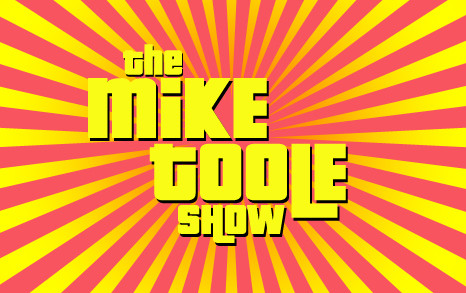
Take one look at the artwork, and you're liable to recognize the silly, 1960s-era man-in-costume robot from another series: Giant Robo, one of my favorite OVAs ever. Of course, the Giant Robo version looks a little different.
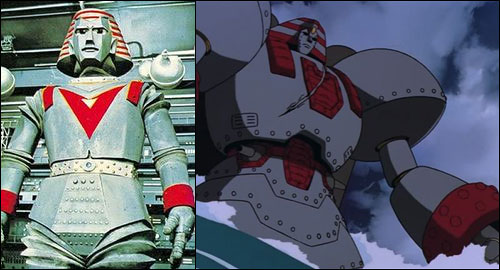
Naturally, an expensive OVA from the 1990s is going to be able to pretty things up a lot more than a shoestring-budget live-action TV show from the 1960s. But hang on a minute-- what happens when you compare old-school Robo to the original artwork from the manga of its creator, Mitsuteru Yokoyama?
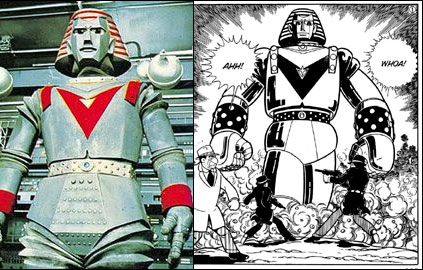
Turns out that the silly-man-in-suit version is actually more faithful! But there's a good reason for this. Mitsuteru Yokoyama is yet another pillar of the anime business, a highly successful artist during the 1950s and 60s. His Tetsujin 28 comic was so popular that Toei asked him to create a cool robot story for a live-action TV series. Yokoyama responded not by simply making a couple of drawings and a story treatment and calling it Giant Robo, but by creating an entire detailed Giant Robo manga.
In the early 60s, Tetsujin 28 was a multimedia force in the days before such a thing commonly existed. There was the manga, there was a modestly successful (though hilariously dated) live-action series sponsored by Hitachi in 1960, and there was an extremely popular and robust B&W TV anime, which made its debut in 1963. Just three years later, Tetsujin 28 would debut on our shores, starting with New York's WPIX, under the new title “Gigantor.” So yeah, Yokoyama was riding high in the 60s, which is why Toei approached him in the first place.
Tetsujin 28 is widely touted as the very first giant robot anime. I'd have to agree, unless you're splitting hairs and pointing at some of the bigger bad-guy robots in Osamu Tezuka's Astroboy stories. I've seen a giant robot with a pilot going back to at least 1952 and Paul Grimault's fantastic Le Roi et L'oiseau, and weird, semi-sentient killer robots date all the way back to the The Mechanical Monsters, the Fleischer Bros. Superman cartoon from 1941 that famously influenced Hayao Miyazaki in his creation of those spooky flying robots from Laputa. But if nothing else, Tetsujin 28 popularized the idea of a massive metal dude piloted (or, in this case, controlled) by a human operator. But the robot wasn't the only thing that made Tetsujin 28 popular-- rather than being a pure, specific robot story, it skillfully builds that trope over the top of the already-established “hero boy detective” genre. What, you think Detective Conan is the O.G. in that category? Not by a long shot - even Osamu Tezuka had a famous boy detective, Rock Home. In fact, Tetsujin’s hero Shotaro Kaneda is a boy detective of such renown that he acts as a sort of ad-hoc arm of the police-- he's even allowed to carry a handgun and drive a car, despite being twelve years old. Would I have thought a car-driving, gun-totin’ kid was awesome when I was that age? Hell, yes! In fact, I still think it's pretty goddamn remarkable.
Gigantor, Fred Ladd's slightly free adaptation of the original, did pretty well for itself on American TV, airing from coast to coast and rerunning incessantly for more than a decade thereafter. A couple of episodes of it even ended up airing on Adult Swim some years back. The giant robot nerd in me is a little dismayed that, back in the 60s, there wasn't much produced or imported in the way of toys, but the dub itself is zany, exuberantly acted, and features one of Shotaro Kaneda's-- excuse me, make that Jimmy Sparks’-- colleagues renamed “Dick Strong.” If you snicker at that in his presence, Ladd will still roll his eyes and remind you that the word “dick” wasn't routinely used that way when the show was adapted in ‘66. The best part about the adaptation, though? Gotta be the theme song.

Yokoyama's Tetsujin 28, the first big giant robot series, turned out to have surprising staying power. The boy detective and his remote-controlled robot returned to the airwaves in 1980's New Tetsujin 28, with the robot and characters updated to look a bit more modern. It would take a while, but Ladd would get around to adapting it into English as The New Adventures of Gigantor in 1993. Do you remember watching it on the Sci-Fi Channel?
Far weirder was 1992's Tetsujin 28 FX. Rather than being another remake, it's a sequel-- and not a sequel to New Tetsujin 28, but to the original series. This one's about Shotaro's son, Masato, who works as part of a goddamn Boy Detective Agency, and controls his souped-up robot pal with a gun-shaped controller. When things get really dicey, dad steps in with the original robot, which is my favorite aspect of this particular Tetsujin installment. Though the original Tetsujin is smaller, it's still effective, and it's fun to see the former boy detective as a brash, confident family man in a slick white suit. But man... those character designs just scream “early 90s!!” in a pretty awkward way.
Was that the end for Tetsujin 28? Not hardly. I was lucky to be on hand as a guest at Ani-Magic 2003, a small west coast convention where famed director Yasuhiro Imagawa (he of Giant Robo and G-Gundam fame) premiered a short clip of what first appeared to be new Giant Robo footage. But it wasn't-- it was a new remake of the original Tetsujin 28! As Imagawa explained, he'd kind of been hoping to tackle Tetsujin 28 all along, but when he signed on with Bandai Visual for Giant Robo, he naturally couldn't make quite the same story. While I was thrilled to collect this new Tetsujin 28 series by Imagawa in DVD, it's likely one of the several properties that sank Geneon-- I always thought it was a mistake to avoid tying it into the Gigantor brand, which is owned separately by Fred Ladd.

As for the content of the series, it's got some great signature Imagawa stuff-- a few really nasty cliffhangers, plus a gritty, awesomely realized vision of booming, postwar Japan. What I like in particular is that Imagawa is quick to remind viewers that the postwar period also had more than a few notes of chaos, as mobs of returning soldiers filled the cities and began looking for work, or just looking for trouble. Imagawa focuses on a central aspect of Tetsujin 28 that was practically a running joke in the original series-- the remote control box, and the fact that the only thing needed to thwart Shotaro and seize his big metal buddy was to get that box. When police chief Ohtsuka politely suggests mothballing the robot because of this obvious vulnerability, we're treated to a great speech from the kid, who asserts that he doesn't care if possessing the control box places him in danger, he will use Tetsujin 28 to bring peace and justice to the land! Then he uses Tetsujin to blow the shit out of a bad guy robot in one punch.
At the same time, Imagawa's Tetsujin 28 is far from perfect. The script and design of the show are fine, but I found the pacing to be positively glacial, especially when compared to Imagawa's usual breakneck pace. I ended up watching long stretches of the series at 1.5x speed, just to get to the meat of the story, and the muted color palette wasn't great, either. Perhaps tellingly, the big wrap-up to the new series, the cinematic movie retelling Tetsujin 28: The Midday's Moon, was plagued by a long delay. That's actually true to Imagawa's form; he was notoriously behind schedule on Giant Robo, and his lack of attention to scheduling also contributed to him being relieved from duty as the director of Getter Robo Armageddon after three episodes. But this time it was different-- the movie sat on the shelf for almost two years because the director himself just didn't like it. In interviews, he candidly described it as a troubled production, and warned audiences that he wasn't happy with it at all.
I've seen the film, of course, and while it's by no means a terrible movie, it doesn't measure up to what I expect from Imagawa. The story, sort of a divergent retelling of the original, introduces an adopted older brother for Shotaro, and new bad guys plus the return of Tetsujin rogue's gallery regular Professor Big Fire. There are one or two absolutely great action scenes, but for the most part it's a pile of by-the-numbers dialogue and plotting. I think it's worth having a look at, but don't weep for not having it on your shelf, fellas. In between the 2004 TV series and 2006 animated movie, Geneon Universal produced a live-action family movie, which retells the Tetsujin story in modern times. That's not a great film, either-- the CG special effects are a bit laughable (picture two big, shiny robots battling across curiously empty city blocks, doing almost no damage to the asphalt streets they stomp around on), and the script and story are the kind of cheese that small children will be totally OK with, but not you and me. It's kind of a shame that the 2004 revival wrapped up with these mediocre films-- the return of Tetsujin 28 could easily have been the pinnacle of the franchise, but it just didn't seem to pan out.
But what of Johnny Sokko, or Giant Robo, if you prefer? That hoary old live-action TV series is fun as hell to watch, thanks to its absorbing confluence of silly robot/monster battles, stilted English dubbing, and crazed, hilarious violence (I'm pretty sure at least one character, good and bad both, gets gunned down per episode). In fairness, the series also boasts fabulous costumes, a reasonable attempt at an ongoing story, and a genuinely creepy-looking bad guy in the alien General Guillotine. The show is no Ultra Seven, but it'll do just fine. I just wish the transfer looked a little better; Shout Factory's DVD release boasts a nice price, but all of the episodes appear to be unremastered 16mm transfers, which means grain, scratches, and lots of soft, blotchy colors.

What makes the experience of watching Johnny Sokko doubly interesting is the fact that I'm taking it all in after being a maniac fan of Giant Robo for almost 20 years. The resemblance between the two is kinda coincidental; when Imagawa came aboard the project courtesy of producer Yasuhito Yamaki, he was informed that the characters and settings from the TV series couldn't be used, ostensibly because they were part of the package in the Toei series. Imagawa's solution was novel, weird, wild, and absolutely awesome-- after getting Yokoyama to sign off on the idea, he simply repopulated the world of Giant Robo, where the International Police square off against the Big Fire organization, with heroes and villains from across the manga authors entire ouvre of work. Giant Robo and his pint-sized kid boss, Daisaku Kusama, are still the central figures, but the good guys include a range of characters from the likes of Tetsujin 28 and Babel II. On the same note, the bad guys, in particular the formidable Magnificent Ten, are drawn from comics as disparate as Mars the Destroyer and Yokoyama's comic adaptation of Romance of the Three Kingdoms.
I've said it many times before, but running super-powered 15th century Chinese warriors into battle next to plodding giant robots, secret agents, and powerful ESP users was a stroke of goddamned genius on Imagawa's part. Thanks to his excellent grasp of tension, good cinematography, and thundering orchestral soundtrack, it reaches ludicrously epic heights at times. It might get a little too silly for your tastes, but every fan of anime should absolutely try it out. It's really easy to find on DVD, but it is going out of print, so don't wait too long to go searching. The only unfortunate thing about the franchise is that there are segments of the story that were never animated. Interestingly, Imagawa has said that if the series was only as successful in Japan as it was in the US, they would've gotten the budget to keep going. It's fascinating that such a weird, inherently obscure show would thrive in a place where Yokoyama's manga has never, ever been available in English.

What Mitsuteru Yokoyama brought to the giant robot formula is threefold-- first, he introduced Tetsujin 28, in which Shotaro Kaneda uses an electrical box to control the robots movements directly. Then came Giant Robo and Daisaku Kusama; instead of direct controls, he speaks orders into a wristwatch intercom, and the semi-sentient robot responds. Therefore, while Giant Robo is programmed to only respond to his owner's voice (so the watch can't just be stolen), he's not effective without Daisaku. Finally, in the series Babel II, Yokoyama introduced fully-sentient robot servants. who often act of their own accord on behalf of their master Koichi, a schoolkid who discovers he's the direct heir of an alien race. Until Go Nagai debuted the pilot-controlled Mazinger Z, it was Yokoyama who was the tastemaker for giant robots. As for Babel II, we never did get the original anime or manga. Instead, we got a 4-part OVA from the 90s (not bad, but doesn't bring much to the table) and a later TV remake, which has got to be one of the lousiest commercial anime DVD releases out there. That show is boring and full of technical mistakes, but I watched the whole thing, because I've compulsively watched almost all of the anime based on Yokoyama's works just to spot the characters who also appear in Giant Robo.
Yokoyama scored another TV remake of one of his manga works in 2002. It's called Mars, which is irritating because that's also the name of a pretty popular shoujo manga. The existence of this shoujo manga has confounded my searches for the Yokoyama stuff for years, just like a certain indie rock group prevents me from finding cartoons about a kid and his huge dog. Thanks for nothing, Belle and Sebastian! Anyway, Mars is about a mysterious alien warrior with the power to destroy the earth. He likes it here, but the bad guys want to kill him and trigger this power, which results in a chain of slam-bang robot fights. The show is amusingly populated with the Giant Robo rogues gallery, including Alberto and the old guy who flies around on a kite in that one episode. That's not the only Mars anime, either. There's a two-part OVA from the 90s that looks a little better on account of being an OVA, but still tries to cram way too much story into a tiny package. Going back even further, you'll find the TV series Godmars, which takes the core idea-- an alien kid whose death will destroy the world-- and dresses it up with hot, early-80s mecha action. If you can remember Bandai's awesome GODAIKIN line up toys, you might remember the Godmars toy, which was re-titled GODMARZ for our shores. That Z is very important! Anyway, here's how different the Mars and Godmars robots are. They're both called Gaia!
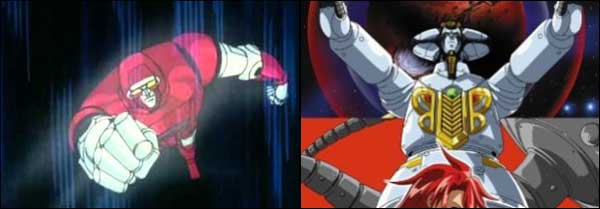
Mitsuteru Yokoyama also pretty much invented the magical girl genre, at least as it relates to TV anime. Inspired by the cartoon opener of American sitcom Bewitched, Yokoyama created Sally the Witch, the tale of a magical princess who comes to the human realm, in search of pals and adventures. She gets plenty of both, taking up with her new buddies Yoshiko and Sumire, who themselves are the basis for pretty much every “tomboy and elegant, polite girl sidekicks” archetype that would come after. Even Sally's familiar, the shape-changing Kabu, set the stage for the parade of tiny demigods and talking animals that would lend assistance to baton-waving, spell-chanting cutie-pies for decades to come. Not only did Sally get a TV sequel in 1989, Imagawa absolutely sneaked her into Giant Robo, right when you least expected her.
Sally wasn't Mitsuteru Yokoyama's only magical heroine, either. He also created this girl:

Starting from the left is Comet-san, the baton-wavin’ heroine of the live-action TV series. Just like Giant Robo, Yokoyama created the TV series first, then set to work on the manga, pictured in the center. Comet isn't just a magical princess, she's a magical space princess, who travels to earth in search of the prince she's fated to marry. The original stories are pretty standard “Comet learns stuff about earth” fare, but a 2001 anime remake saw Comet-san updated to look more like a contemporary magical girl. Just like Godmars, Yokoyama handled the redesign himself, and then handed the show over to director Mamoru Kanda, who'd just proven his majokko worth by directing episodes of Madhouse's fantastic Cardcaptor Sakura. This show was an early digital fansub I grabbed regularly, secure in the knowledge that it would never, ever be licensed. I'm kinda sad to be right about this, ten years later, but maybe there's some hope for Comet-san showing up on one of the streaming services sometime down the road.
What's left? Romance of the Three Kingdoms is left, that's what. Luo Guanzhong's famous work of Chinese literature has gotten anime and manga adaptations many times over the years, but the acknowledged king of this little subgenre is Mitsuteru Yokoyama's titanic, 60-volume version, which he completed over the course of fifteen years. I'm not gonna go into the appeal of this too much—Ro3K and its anime adaptations kinda need their own column-- beyond pointing out that Yokoyama, whose artistic style matured greatly over the course of his career, absolutely ruled at drawing armor, horses, castles, and humongous scenes of battle. His manga version is so ubiquitous and iconic that when it was adapted to TV anime in 1991, it was titled Mitsuteru Yokoyama's Romance of the Three Kingdoms. I've been tearing through episodes of this show, which some maniac has been leaking onto Youtube, and it's a fun watch-- like Tetsujin 28 FX, it's aggressively 90s, but the bright colors and synth/rock soundtrack seem somehow more suited to this material. The TV anime focuses on Liu Bei and his pals as they fight and plot against the warlord Cao Cao; the show wraps up after the Battle of Red Cliff, which makes sense since that's the coolest part of the whole story, but that means my favorite character, Zhuge Liang, doesn't get much screentime. He's a strategist who is based, like many Ro3K heroes, on a real historical figure, who's second in renown only to Sun Tzu-- a huge nerd who was as good at politics and literature and inventing as he was at making war. Naturally, Giant Robo employs him as a villain.

There are still additional significant works by Mitsuteru Yokoyama-- his telling of The Water Margin, another of the pillars of classic Chinese literature, also contributes greatly to Giant Robo’s cast and narrative, and his TV series Akakage, the tale of a powerful ninja, was the first color tokusatsu TV series that Toei produced. While I've got a couple of untranslated Water Margin volumes on my shelf, I've never gotten around to checking out Akakage. There was a TV anime in 1989 and a (relatively) big-budget film in 2001. I want to see it, even though I figure it's probably about as good as any other live-action anime adaptation.
I'll wrap this one up on a sad note. but life's kinda sad sometimes. When Mitsuteru Yokoyama died in 2004, I didn't even know he was still alive. Just like Abe Vigoda, I hadn't really heard about him doing stuff in a few years (I didn't learn that he'd handled the Comet-san redesign himself until years later), and just figured this meant that he'd died, because he was pretty old, right? I mean, he was drawing manga in the 1950s! But this great genius, who'd done so much to define magical girls and giant robots and ancient kingdoms at war, dozed off with a cigarette in his hand, and his house caught fire, and that was that. I guess it's kind of absurdly poetic that this is the easiest to find photograph of him on the internet:
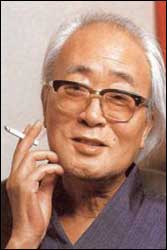
Life's pretty cruel sometimes, man. Yokoyama was only 69 when he passed, which bums me out because now he'd only be 78, and very likely still working on something or another. In spite of that, though, he's well-remembered; in Kobe's Wakamatsu park, the good people are protected by this guy, who stands just as tall in real life as he does in the comics.
How about it, pals? Are you pining for those expensive Japan-only Giant Robo blu-rays like I am? If you won the lottery, would you finance a true sequel to the Giant Robo OVAs, or has their time come and gone? Seen and enjoyed any other Yokoyama anime? And finally, to bring things back to my opening remarks, do you watch a lot of anime and read manga on a tablet these days? Let's talk about it in the comments!
discuss this in the forum (22 posts) |